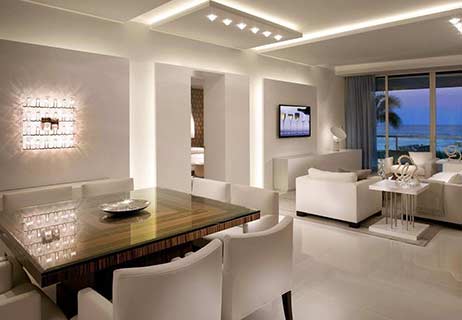Lighting tips for your Home; How to create a bright and beautiful fully automated house
Many households incorporate smart and automation solutions to make essential functions easier to accomplish. Automated lighting is among the many improvements that can be added to a house to make it much more efficient. It affects many of the conditions of the house, which will help to reduce electricity costs and keep the whole family safe against intruders. There are many ways to implement automated lighting in your home and we are going to take a look at some of them now.
How to use automated lighting to make your home more liveable:
Motion Sensors- the lighting can be controlled by motion sensors so it will be turned on or off when someone approaches or leaves the area. A motion sensor device is usually based on IR technology that can recognise the shape of a human. So, when you are entering a room, the light will be turned on, which is convenient and energy-efficient.
Smartphone Control- providers of automated lighting systems usually include an Android or iOS app to allow users to remotely control the lighting system. With the app, they can set schedules or manually control the lighting.
Scheduling And Timers- timed solution is the simplest way to automate a lighting system. It works well for outdoor lighting that is turned on and off at specific time of the day. However, it isn’t suitable for indoor lighting.
Voice Automated- many smart homes have smart speakers that allow family members to control any component with verbal commands. This technology may be used to complement motion sensors and scheduling methods.
Components Of An Automated Lighting System
When installing an automated lighting system, there are essential components to use:
Smart Plugs- these plugs can turn any ordinary lighting fixture into a smart device because it can be turned on or off remotely. Smart plugs allow homeowners to implement scheduling, smartphone control, and other automation methods.
Smart LED Bulbs- in many cases, it is more convenient to use smart bulbs,because installing smart plugs are not always easy for overhead lighting. These long-lasting LED smart bulbs have tiny Wi-Fi modules, so they can be connected directly to the smart home system.
Smart Switches- unlike smart plugs, you can still manually control light fixtures with smart switches. These switches also have embedded Wi-Fi modules for direct connection with the smart home system. It is straightforward to replace regular switches with smart ones, because they typically use a wireless connection.
Wi-Fi Dimmers-dimmers are necessary if you need lighting with different levels of brightness, depending on the situation. With an app, you can customise the percentage of brightness for different usage scenarios.
Contact Wifi Smart Home
To learn more uses for smart plugs, contact Wifi Smart Home and shop the industry’s largest selection of smart home accessories today.
If you enjoyed this article, please feel free to share it on your favourite social media sites.

